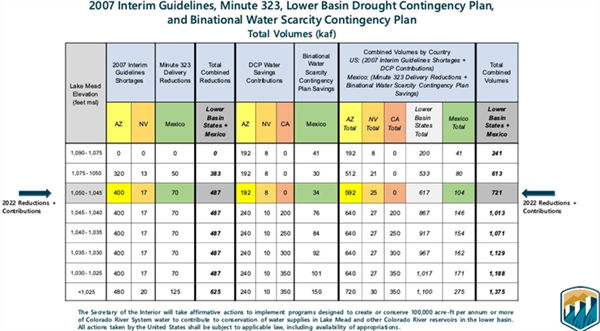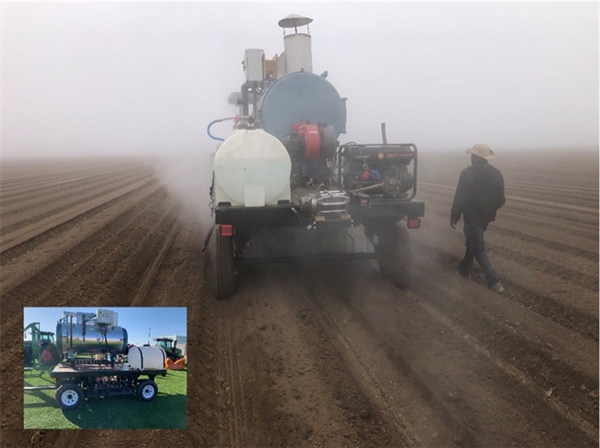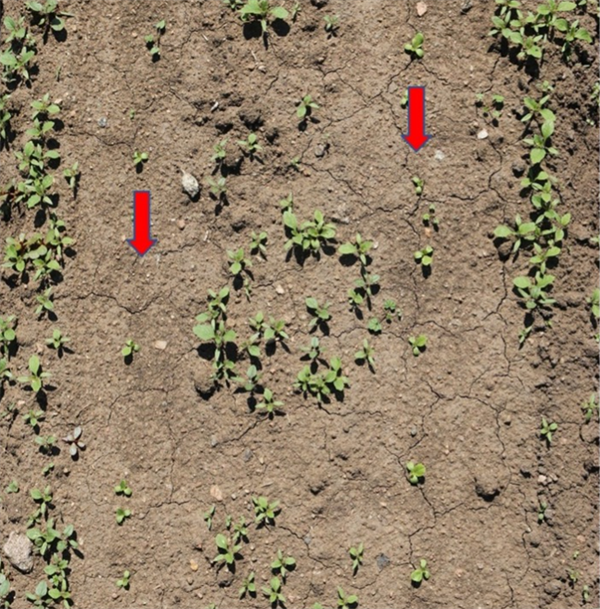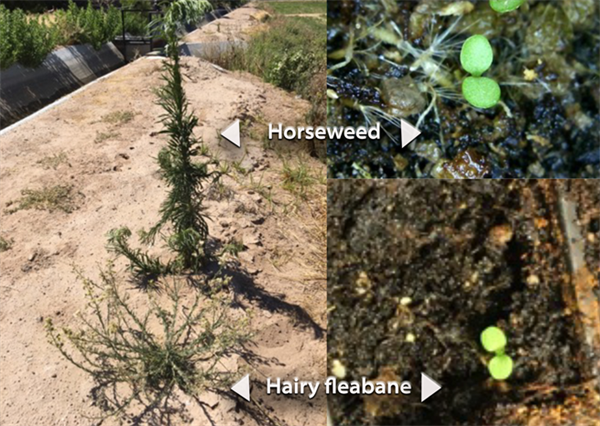
The situation on the Colorado River has not changed appreciably since last summer when the Bureau of Reclamation (BOR) made a bold announcement on 14 June 2022 with BoR Commissioner Camille C. Touton describing the need to make substantial reductions of 2 to 4 million acre-feet (MAF). As Commission Touton described, the BOR has the authority to “act unilaterally to protect the system, and we will protect the system.” (Bureau of Reclamation, 28 June 2022). She stated that the BOR was allowing the basin states 60 days to come up with a plan. In the absence of a plan from the basin states, the BOR would be ready to take action.
Since June, the BOR has been engaging in discussions with the seven U.S. basin states that depend on the Colorado River to develop a plan for the reductions, and the anticipated decisions from the BOR have not materialized.
The basic arithmetic on the Colorado River is as follows:
16.5 MAF is currently the allocated amount of water budgeted with 7.5 MAF allocated to both the upper and lower basins, plus 1.5 MAF allocated to Mexico:
(7.5+7.5 MAF = 15 MAF U.S. + 1.5 MAF Mexico = 16.5 MAF total)
In the past two decades, the average annual flow of the Colorado River from 2000 - 2018 has been approximately 12.4 MAF, which is 16 % lower than the 1906-2017 average of 14.8 MAF/year. Thus, we can see where the 4 MAF differential is determined.
A reduction of Colorado River water allocations from 16.5 MAF to 12 MAF represents a 27% reduction. That is in line with the climate and hydrological reality we are dealing with. That would be a huge reduction for the Colorado River basin and a painful experience for many entities in the desert Southwest.
On 16 August 2022, after the 60 days provided by Commissioner Touton had expired, U.S. Department of the Interior Deputy (DOI) Secretary Tommy Beaudreau with Assistant Secretary for Water and Science Tanya Trujillo announced that the 2023 Colorado River Operational Plan would move to Tier 2a reductions associated with the Drought Contingency Plan (DCP), which was ratified by the lower basin states in 2019 (Figure 1).

Figure 1. Reductions in Colorado River allocations according to the 2007 Interim Guidelines, Minute 323, Lower Basin Drought Contingency Plan, and Binational Water Scarcity Contingency Plan. Total volumes in thousand acre-feet (KAF) units. Source: U.S Bureau of Reclamation.
The Tier 2a changes will require an additional 80 thousand acre-feet (KAF) being reduced from Arizona’s 2.8 MAF allocation of Colorado River water (Figure 1). This will result in a 592 KAF total reduction from Arizona’s allocation, which includes the 512 KAF reduction for Arizona from Tier 1, that was first imposed in January 2022 (512 + 80KAF from Arizona = 592KAF, which is a 21% reduction in Arizona’s Colorado River allocation. In addition, Tier 2a reductions include 25 KAF from Nevada, an 8% annual allotment reduction and 104 KAF, or 7% of Mexico’s annual allotment.
The Tier 1 and Tier 2a reductions have wiped out the CAP allocations to the agricultural irrigation districts in central Arizona. No water savings will be required for California in 2023 under these operating conditions. If or when Tier 2b reductions are put in place California will take a 200 KAF reduction (Figure 1).
The developments and actions from the BOR and DOI since June have been basically “business as usual” since the DCP was already in place and the water levels in Lake Mead would warrant Tier2a or even Tier 2b reductions without any further actions on the part of the BOR or DOI.
In the 60 days following the June BOR announcement, the major agricultural districts on the lower Colorado River, including Arizona and California irrigation districts on the mainstem of the river, came together to form a coalition and develop a draft plan in response. They presented a proposal to reduce nearly 1.0 MAF of irrigation water by agreeing to cut 1.0 AF/acre throughout the districts. They were also seeking financial compensation of $1,500/acre, resulting in a total cost of nearly $1.4B to help farmers in these districts make changes and investments to achieve greater efficiencies with water allocated from the Colorado River.
This effort on the part of the lower Colorado River irrigation districts to develop this proposal in 60 days was substantial and remarkable in many ways. Also, the state of Arizona has demonstrated a willingness to step up and contribute to the conservation needs of the Colorado River system by retaining more than 800 KAF behind Lake Mead in 2022. In addition to the 512 KAF reduction required of Arizona from DCP Tier 1 reductions (Figure 1), the state of Arizona voluntarily contributed more than 300 KAF to leave in the river system. That too was remarkable and quite impressive.
No other basin states have offered anything of substance other than suggestions that some other entity take the cuts in water allocations. Thus, the collective efforts among basin states that Commissioner Touton was calling for in June have not materialized.
California has recently offered to leave 400 KAF in Lake Mead with the caveat that the state receives financial support for Salton Sea remediation. However, to the best of my knowledge, California has not described what they would do for Salton Sea remediation.
The Gila River Indian Community (GRIC) has recently offered to 250 KAF of water under their control for the Colorado River system, with 125 KAF from their direct Colorado River allocation plus another 125 KAF of water they have stored in underground aquifers that they are willing to sell as part of deal offered.
On 28 October 2022, the DOI announced that the BOR will analyze the existing guidelines for operating the Hoover and Glen Canyon Dams for Lakes Mead and Powell, respectively. This most recent announcement has generated a great deal of speculation with some observers suggesting that the DOI/BOR are ready to act soon. Others are thinking that perhaps this will translate to another year of review and analysis on the part of the DOI and BOR.
So, there are still a lot of questions and uncertainty coming from the federal entities with the Colorado River situation.
Meanwhile, Mother Nature and the basic hydrology of the Colorado River basin is not changing or waiting for the feds or some great basin-wide coalition to come up with a plan. We are still using water at a rate that is much greater than is being provided from precipitation in the watershed.
What we have at stake is the Colorado River system as a water source that supports 40 M people in the Southwest, approximately 6.0 M acres of cropland, and 30 native American tribes among seven U.S. states and two states in Mexico. If water levels fall too low in Lakes Powell and Mead, not only is there a lack of hydropower that can be generated but also large volumes of water cannot be moved to areas that need it, including agricultural districts.
This is a serious condition for desert agriculture in this region since more than 70% of the Colorado River's water is used for irrigation. This water is used to irrigate 15% of the nation's farmland and produce 90% of the winter leafy green vegetables. We have a lot at stake locally, regionally, and nationally.
Additional references:
Allhands, Joanna. Arizona Republic, 2 November 2022: https://www.azcentral.com/story/opinion/op-ed/joannaallhands/2022/11/02/federal-action-save-lake-mead-powell-colorado-river-too-late/8242368001/
Bureau of Reclamation, 28 June 2022 https://www.usbr.gov/ColoradoRiverBasin/
Charles, Dan. National Public Radio, 4 October 2022.
https://laist.com/news/climate-environment/meet-the-california-farmers-awash-in-colorado-river-water-even-in-a-drought
Sanchez, Camryn. Arizona Capitol Times, 3 November 2022: https://azcapitoltimes.com/news/2022/11/03/arizona-lawmakers-push-california-to-cut-water-usage/
This study was conducted at the Yuma Valley Agricultural Center. The soil was a silty clay loam (7-56-37 sand-silt-clay, pH 7.2, O.M. 0.7%). Spinach ‘Meerkat’ was seeded, then sprinkler-irrigated to germinate seed Jan 13, 2025 on beds with 84 in. between bed centers and containing 30 lines of seed per bed. All irrigation water was supplied by sprinkler irrigation. Treatments were replicated four times in a randomized complete block design. Replicate plots consisted of 15 ft lengths of bed separated by 3 ft lengths of nontreated bed. Treatments were applied with a CO2 backpack sprayer that delivered 50 gal/acre at 40 psi to flat-fan nozzles.

Downy mildew (caused by Peronospora farinosa f. sp. spinaciae)was first observed in plots on Mar 5 and final reading was taken on March 6 and March 7, 2025. Spray date for each treatments are listed in excel file with the results.
Disease severity was recorded by determining the percentage of infected leaves present within three 1-ft2areas within each of the four replicate plots per treatment. The number of spinach leaves in a 1-ft2area of bed was approximately 144. The percentage were then changed to 1-10scale, with 1 being 10% infection and 10 being 100% infection.
The data (found in the accompanying Excel file) illustrate the degree of disease reduction obtained by applications of the various tested fungicides. Products that provided most effective control against the disease include Orondis ultra, Zampro, Stargus, Cevya, Eject .Please see table for other treatments with significant disease suppression/control. No phytotoxicity was observed in any of the treatments in this trial.
Over the last several years, Dr. Steve Fennimore, Extension Specialist - Weed Science, UC Davis and I have been collaborating on investigating the use of band-steam for controlling in-row weeds and soilborne pathogens. Band-steam is where, prior to planting, steam is injected in narrow bands, centered on the seedline to raise soil temperatures to levels sufficient to kill weed seed and soilborne pathogens (>140 °F for > 20 minutes). After the soil cools (<1 day), the crop is planted into the strips of disinfested soil.
This spring, we completed fabrication of a second-generation prototype band-steam applicator that is simpler in design and easier to operate than our first prototype. Steve has been demonstrating the device to growers on their farms in the Salinas valley this summer (Fig. 1). Similar to Yuma trials, application of band-steam is being found to provide very good weed control in the treated band (Fig. 2). Stay tuned for reports of full trial results including hand weeding labor savings, control of Sclerotinia lettuce drop and crop yield in future articles.
The band-steam machine will be back in Yuma in a couple of weeks! If you are interested in testing the device on your farm, please contact me. I’d be happy to work with you.
Acknowledgements
This work is supported by the Crop Production and Pest Management grant no. 2021-70006-35761 /project accession no. 1027435 from USDA-NIFA. We greatly appreciate their support. Any opinions, findings, conclusions, or recommendations expressed in this publication are those of the author(s) and do not necessarily reflect the view of the U.S. Department of Agriculture.

Fig. 1. On-farm demonstration of a prototype band-steam applicator in Salinas,
CA. The machine injects steam into the bed in narrow beds centered on the
seedline prior to planting for control of weeds and soilborne pathogens. (Photo
credits: Steve Fennimore, UC Davis)

Fig. 2. Weed control with band steaming in lettuce. Steam was applied
in a 4-inch band centered on the two seedlines marked by the red
arrows. The weeds outside of the treated band are in areas that were
not steamed, but can be cultivated out easily because they are not
close to the crop seedline. Trials conducted by Steve Fennimore, UC
Davis, in 2022 in Salinas, CA. (Photo and caption credits: Steve
Fennimore, UC Davis).
Hairy fleabane is a summer annual weed from the Asteraceae family and occasional biennial in our area found in cultivated areas and citrus orchards, alfalfa fields, roadsides and ditch banks, landscapes and around buildings. The seedlings are oval to egg shaped and very similar in size (~0.4-0.8mm) to horseweed (Conyza canadiensis), which makes it very hard to distinguish one from the other in the field.
Hairy fleabane grows about 4 feet, branches from the bottom and leaves are pubescent also stems are covered with stiff hairs. The growth habits of horseweed (marestail) are different in that they grow up to 10 feet tall and branches from the upper half of the plant.
You can find Fleabane flowering right now in the Yuma area especially the Yuma Mesa. The IPM Team has received calls from our friends PCAs and growers stating that the Fleabane survives the application of Glyphosate, which has been reported for both conyzas. So, we got some trials in progress looking for options to control Fleabane as well as other weeds that have shown tolerance to Roundup such as White sweet clover or malva in different crops.
The results from the evaluations will be shared in this newsletter.

Reference:
1. UC/IPM Retrieved from http://ipm.ucanr.edu/PMG/WEEDS/hairy_fleabane.html
Results of pheromone and sticky trap catches can be viewed here.
Corn earworm: CEW moth counts down in all traps over the last month; about average for December.
Beet armyworm: Moth trap counts decreased in all areas in the last 2 weeks but appear to remain active in some areas, and average for this time of the year.
Cabbage looper: Moths increased in the past 2 weeks, and average for this time of the season.
Diamondback moth: Adults increased in several locations last, particularly in the Yuma Valley most traps. Below average for December.
Whitefly: Adult movement remains low in all areas, consistent with previous years
Thrips: Thrips adult movement continues to decline, overall activity below average for December.
Aphids: Winged aphids still actively moving but declined movement in the last 2 weeks. About average for December.
Leafminers: Adult activity down in most locations, below average for this time of season.